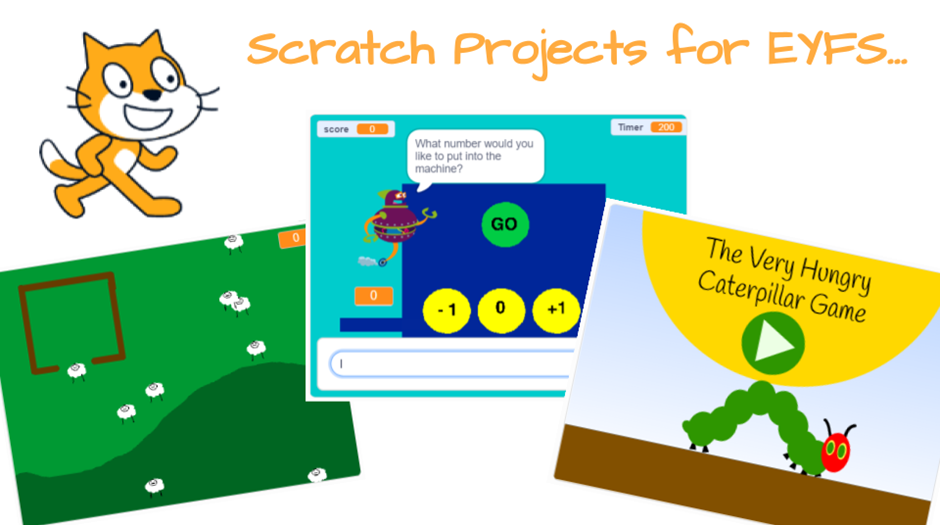16 February 2022
Can you use Scratch in EYFS?

I would not be exaggerating if I said that when I was first introduced to Scratch I thought “that’s fun, but how on earth would I use it in the classroom and what relevance does it have to teaching today?” What a radical change in attitude I’ve had over the last seven years!
I’ve since come to realise that learning to program develops a myriad of skills and is perhaps one of the most useful and relevant things we can teach the next generation. So how did this radical change in attitude come about? It started with my attending free CAS conferences and meeting passionate educators who gave me the confidence to have a go and to start a Code Club in my school.
Using the Code Club Scratch Module 1 Projects I learnt to code alongside my son and his KS2 classmates. Initially working through the projects the night before just so I could try to be one step ahead of them, I soon gave up on this idea as they were very quickly many steps ahead of me! But what I did persevere with was developing strategies to help them debug and improve their code. And once I’d seen the powerful learning that was taking place in our club, I could only see the positives for teaching programming in the classroom.
At the time I was teaching in Reception, so thought that it wasn’t going to be possible to develop programming with them (until I discovered ‘unplugged’ activities, but that’s for another blog!). However, what I was struggling with was finding suitable resources to support children in learning to control a mouse as the advent of touchscreens meant that children were no longer coming into school with the eye-hand co-ordination to control a mouse. This is when, with my new-found knowledge of programming, I had the idea of asking my Code Clubbers to create a game that Reception children could play to improve their mouse skills. The results were amazing!
The Code Clubbers had a real focus for developing their ‘Ghostbusters’ style game and as they watched my Reception children play them at lunchtimes, so they realised what improvements were needed. It was a definite win-win situation and one of our favourites became the Sheep Chase game pictured above.
This experience inspired me to see Scratch not only as a programming tool, but also as a way to create my own teaching resources. Why spend ages hunting around for something that someone else has made when I could create something to my own exact specifications? Which is when I decided to make a simple ‘one more or one less’ function machine (pictured above) as a follow-on to our favourite Mucky Monsters game.
I don’t want to give the impression that I do this regularly, because for a novice programmer like me it does still take quite a while to produce some projects, but I’m very good at ‘remixing’ my own and others’ work! Of course, I still have my Code Clubbers who do an excellent job of following my design briefs and five years on, now doing GCSE Computer Science, my son is still producing projects like this fantastic Hungry Caterpillar game (pictured above) to develop story sequencing skills and mouse control in EYFS.
So, can you use Scratch in EYFS? Well it might be better to focus on unplugged activities first and possibly try ScratchJr, but you can most definitely use it to create teaching resources for them and at the same time provide purposeful programming projects for your Key Stage 2 pupils. Do let me know if you give it a go…








Discussion
Please login to post a comment
Sounds great Rachael! Love the fact that they are easy to adapt and include in the curriculum as fit perfectly! Definitely need a catch up!
Thanks, Jo. I’m loving the Barefoot stuff too! We’ve just been doing the sequencing seeds activity from the Springtime collection this week, linked to Jack and the Beanstalk.
Thanks for sharing your journey Rachael! Some fantastic ideas to develop computing within EYFS! So glad to see that ultimately unplugged for EYFS is the way to go. I will definetly get my Code Club to create some games or activities for younger children.
Why not try out some of the new Barefoot EYFS unplugged resources too?